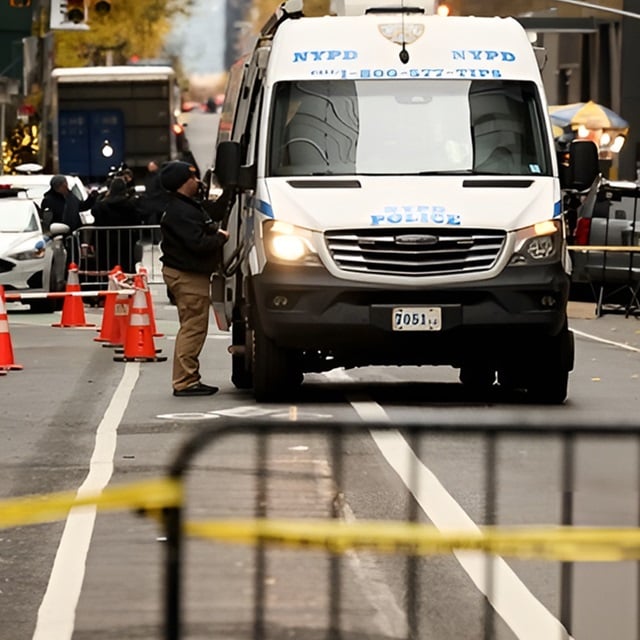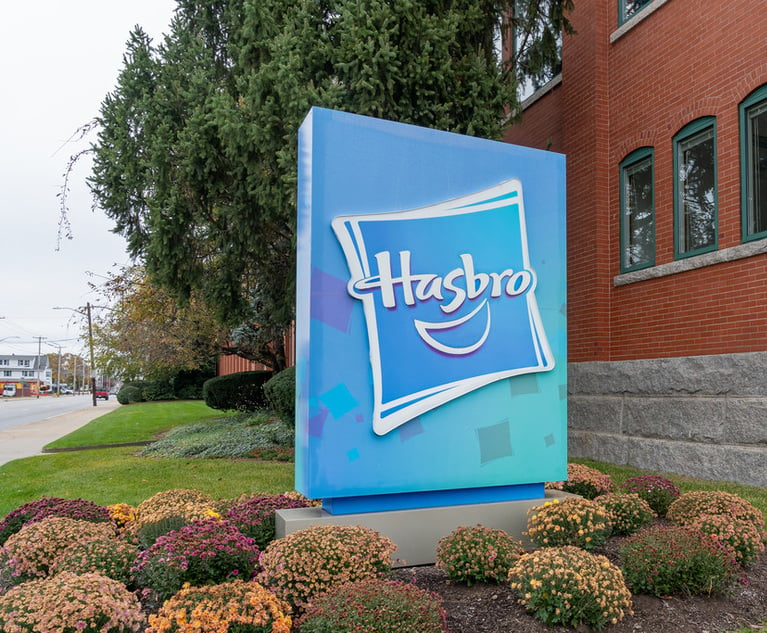IP: Patent facts and figures for fiscal year 2011
The U.S. Patent and Trademark Office (USPTO) recently released its Performance and Accountability Report for fiscal year 2011 (FY2011).
December 27, 2011 at 04:00 AM
3 minute read
The original version of this story was published on Law.com
The U.S. Patent and Trademark Office (USPTO) recently released its Performance and Accountability Report for fiscal year 2011 (FY2011). The report sheds light on the progress of the USPTO in pursuing its goals of examining patent applications in a timely manner, optimizing quality, and preparing for the implementation of the America Invents Act (AIA).
Here are some of the key figures from the report:
- 536,604 new patent applications filed in FY2011, a 5.2 percent increase from FY2010
- 150,173 provisional patent applications filed in FY2011
- 1,250,191 patent applications pending at the end of FY2011
- 267,353 patent applications abandoned during FY2011
- 244,430 patents issued in FY2011
- 20% of patents were issued to small entities
The USPTO reached a milestone in 2011, issuing its 8 millionth patent. It also received a record number of inter partes reexamination requests (374)., but had a slight decrease in the number of ex parte reexamination requests (759). The USPTO granted 94 percent of inter partes requests and of which, 77 percent had related litigation. In the case of ex parte reexamination requests, 88 percent were granted, and 45 percent had related litigation.
Patent program direct costs for FY2011 were about $1.63 billion, primarily for personnel costs. USPTO operations employed 10,210 federal personnel, more than half of which were patent examiners. For FY2011, earned patent revenue was about $2 billion. The major components of revenue derived from patent operations were maintenance fees, initial application fees for filing, search and examination and issue fees.
In its 2010-2015 Strategic Plan, the USTPO set a goal of reducing the average time to first office action for patent applications to 10 months and an average total pendency to 20 months. In FY2011, however, the average first action pendency was 28 months (an increase from 25.7 months in FY2010) and average total pendency was 33.7 months (down from 35.3 months in FY2010). The report pointed to budget constraints that suspended routine programs such as examiner hiring, overtime and training as obstacles to higher performance.
The USPTO also focused on the backlog of patent applications awaiting first action—in 2009, the number of patent applications awaiting first Office Action ballooned to more than 760,000, but by the end of FY2011 that number dropped to about 670,000. To reduce the backlog, the USPTO launched a program to more strictly manage its inventory in a first-in, first-out environment. The USPTO is also developing work-sharing programs such as the Patent Prosecution Highway to reduce re-work, increase collaboration and provide consistency between IP offices.
The USPTO is seeking to hire more patent examiners, with an emphasis on recruiting experienced former examiners and IP professionals. The USPTO also plans to increase telework, including to locations outside of the Washington, D.C. region. Already, more than 6,200 employees agency-wide are working from home at least one day per week.
The passage of the AIA is pivotal to USPTO operations as it gives the USPTO fee setting authority. The ability to spend those fees will still depend upon annual Congressional appropriations. With an increased income from fees, the USPTO plans to modernize its IT infrastructure, hire more examiners and implement the sweeping changes mandated by the AIA over the next 18 months. The AIA is intended to improve patent quality, reduce the backlog of patent applications, reduce domestic and global patenting costs for U.S. companies, provide greater certainty in patent rights and offer effective alternatives to costly and complex litigation.
This content has been archived. It is available through our partners, LexisNexis® and Bloomberg Law.
To view this content, please continue to their sites.
Not a Lexis Subscriber?
Subscribe Now
Not a Bloomberg Law Subscriber?
Subscribe Now
NOT FOR REPRINT
© 2025 ALM Global, LLC, All Rights Reserved. Request academic re-use from www.copyright.com. All other uses, submit a request to [email protected]. For more information visit Asset & Logo Licensing.
You Might Like
View All


Inside Track: Cooley's Modest Proposal to Make Executives Safer

Trending Stories
- 1NBA Players Association Finds Its New GC in Warriors Front Office
- 2Prenuptial Agreement Spousal Support Waivers: Proceed With Caution
- 3DC Circuit Keeps Docs in Judge Newman's Misconduct Proceedings Sealed
- 4Litigators of the Week: US Soccer and MLS Fend Off Claims They Conspired to Scuttle Rival League’s Prospect
- 5Litigator of the Week Runners-Up and Shout-Outs
Who Got The Work
J. Brugh Lower of Gibbons has entered an appearance for industrial equipment supplier Devco Corporation in a pending trademark infringement lawsuit. The suit, accusing the defendant of selling knock-off Graco products, was filed Dec. 18 in New Jersey District Court by Rivkin Radler on behalf of Graco Inc. and Graco Minnesota. The case, assigned to U.S. District Judge Zahid N. Quraishi, is 3:24-cv-11294, Graco Inc. et al v. Devco Corporation.
Who Got The Work
Rebecca Maller-Stein and Kent A. Yalowitz of Arnold & Porter Kaye Scholer have entered their appearances for Hanaco Venture Capital and its executives, Lior Prosor and David Frankel, in a pending securities lawsuit. The action, filed on Dec. 24 in New York Southern District Court by Zell, Aron & Co. on behalf of Goldeneye Advisors, accuses the defendants of negligently and fraudulently managing the plaintiff's $1 million investment. The case, assigned to U.S. District Judge Vernon S. Broderick, is 1:24-cv-09918, Goldeneye Advisors, LLC v. Hanaco Venture Capital, Ltd. et al.
Who Got The Work
Attorneys from A&O Shearman has stepped in as defense counsel for Toronto-Dominion Bank and other defendants in a pending securities class action. The suit, filed Dec. 11 in New York Southern District Court by Bleichmar Fonti & Auld, accuses the defendants of concealing the bank's 'pervasive' deficiencies in regards to its compliance with the Bank Secrecy Act and the quality of its anti-money laundering controls. The case, assigned to U.S. District Judge Arun Subramanian, is 1:24-cv-09445, Gonzalez v. The Toronto-Dominion Bank et al.
Who Got The Work
Crown Castle International, a Pennsylvania company providing shared communications infrastructure, has turned to Luke D. Wolf of Gordon Rees Scully Mansukhani to fend off a pending breach-of-contract lawsuit. The court action, filed Nov. 25 in Michigan Eastern District Court by Hooper Hathaway PC on behalf of The Town Residences LLC, accuses Crown Castle of failing to transfer approximately $30,000 in utility payments from T-Mobile in breach of a roof-top lease and assignment agreement. The case, assigned to U.S. District Judge Susan K. Declercq, is 2:24-cv-13131, The Town Residences LLC v. T-Mobile US, Inc. et al.
Who Got The Work
Wilfred P. Coronato and Daniel M. Schwartz of McCarter & English have stepped in as defense counsel to Electrolux Home Products Inc. in a pending product liability lawsuit. The court action, filed Nov. 26 in New York Eastern District Court by Poulos Lopiccolo PC and Nagel Rice LLP on behalf of David Stern, alleges that the defendant's refrigerators’ drawers and shelving repeatedly break and fall apart within months after purchase. The case, assigned to U.S. District Judge Joan M. Azrack, is 2:24-cv-08204, Stern v. Electrolux Home Products, Inc.
Featured Firms
Law Offices of Gary Martin Hays & Associates, P.C.
(470) 294-1674
Law Offices of Mark E. Salomone
(857) 444-6468
Smith & Hassler
(713) 739-1250






